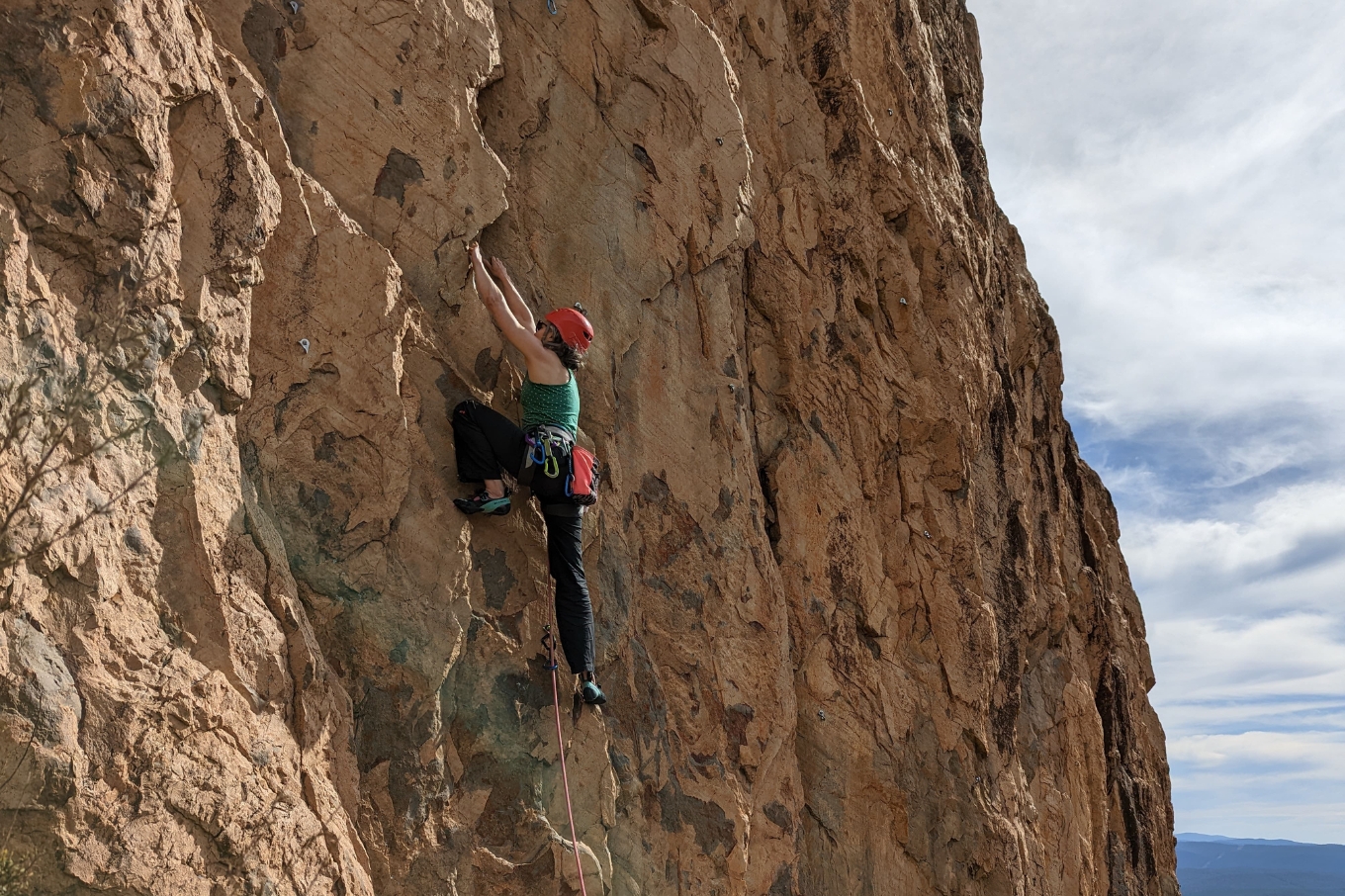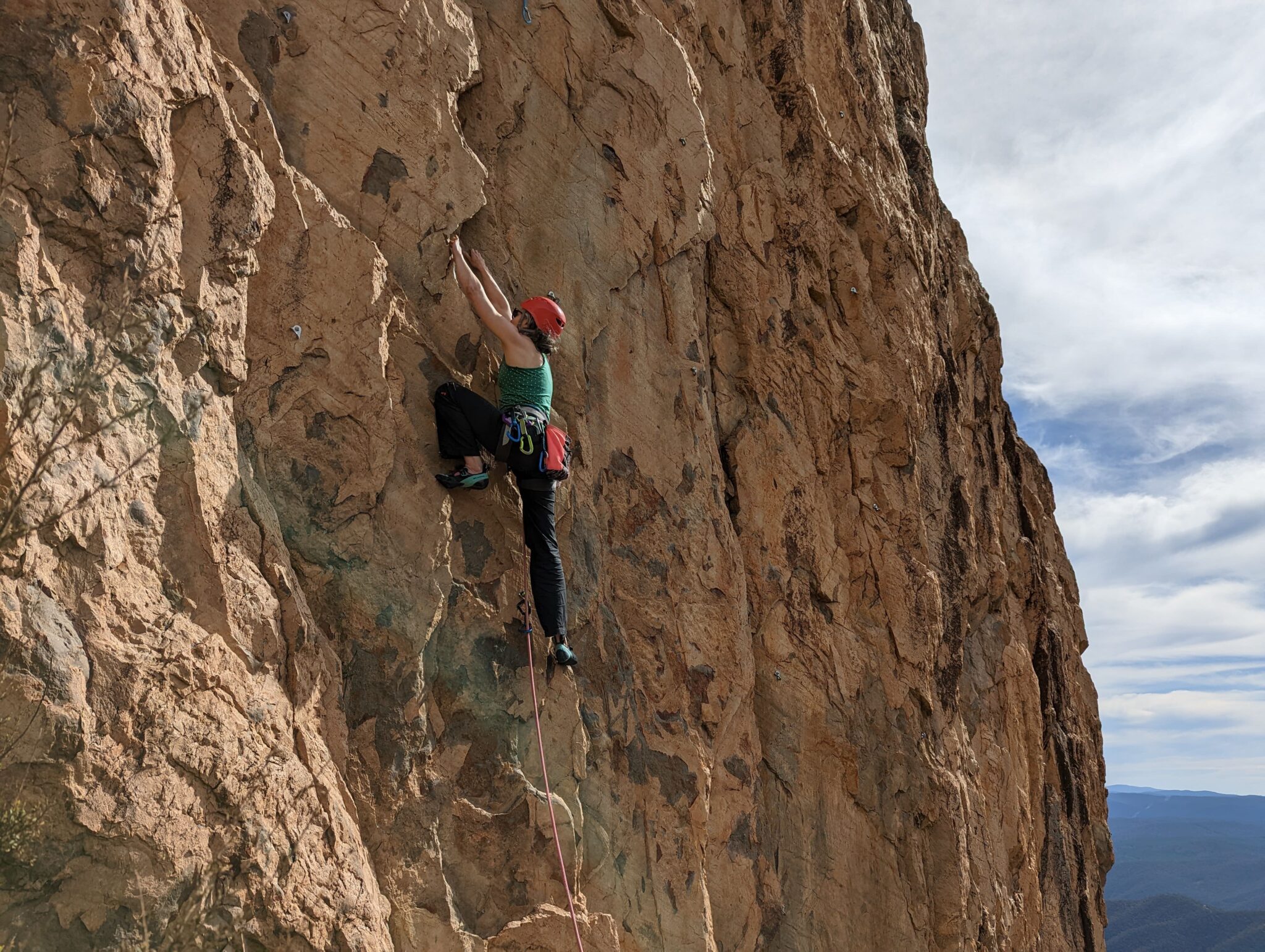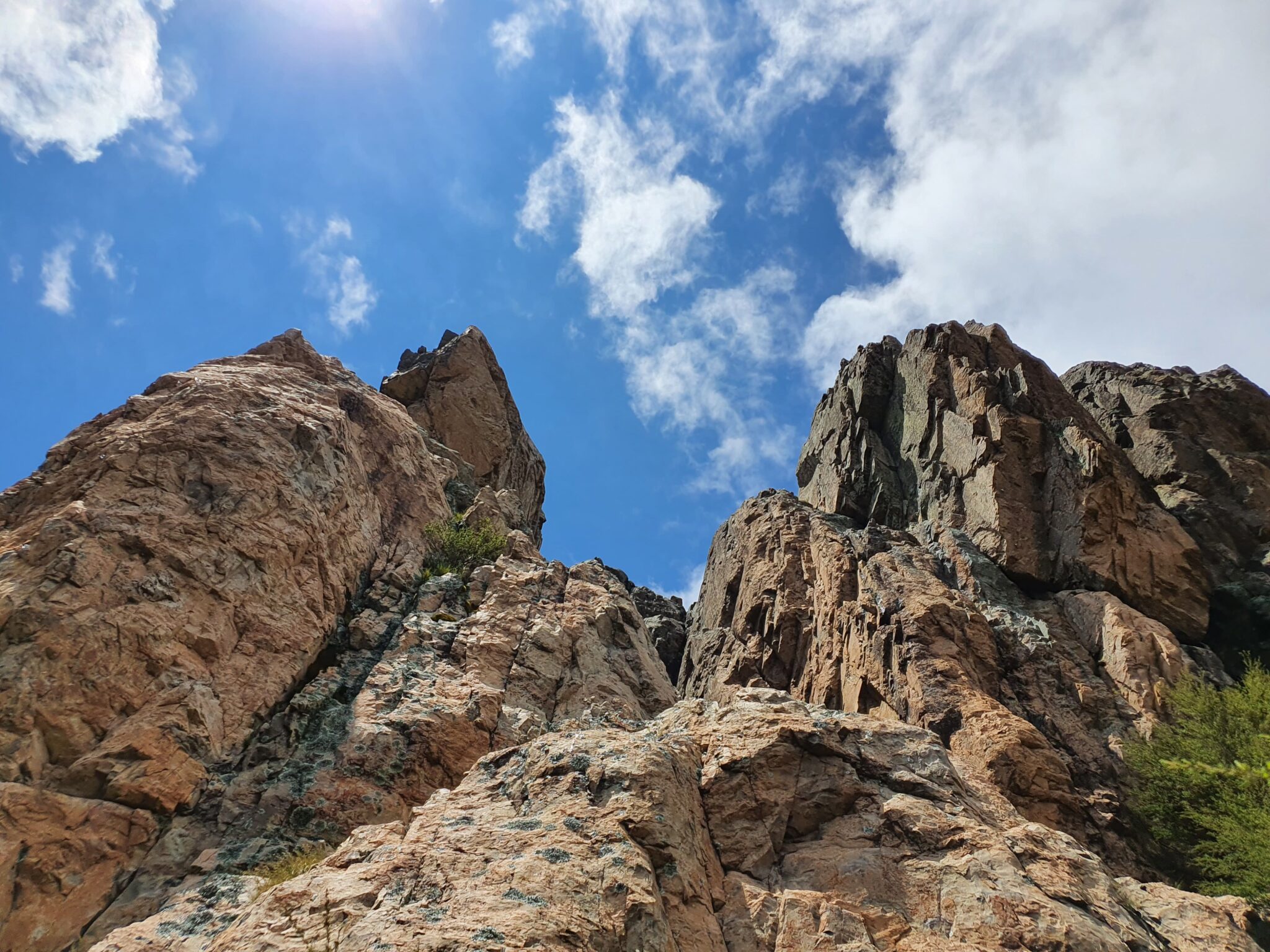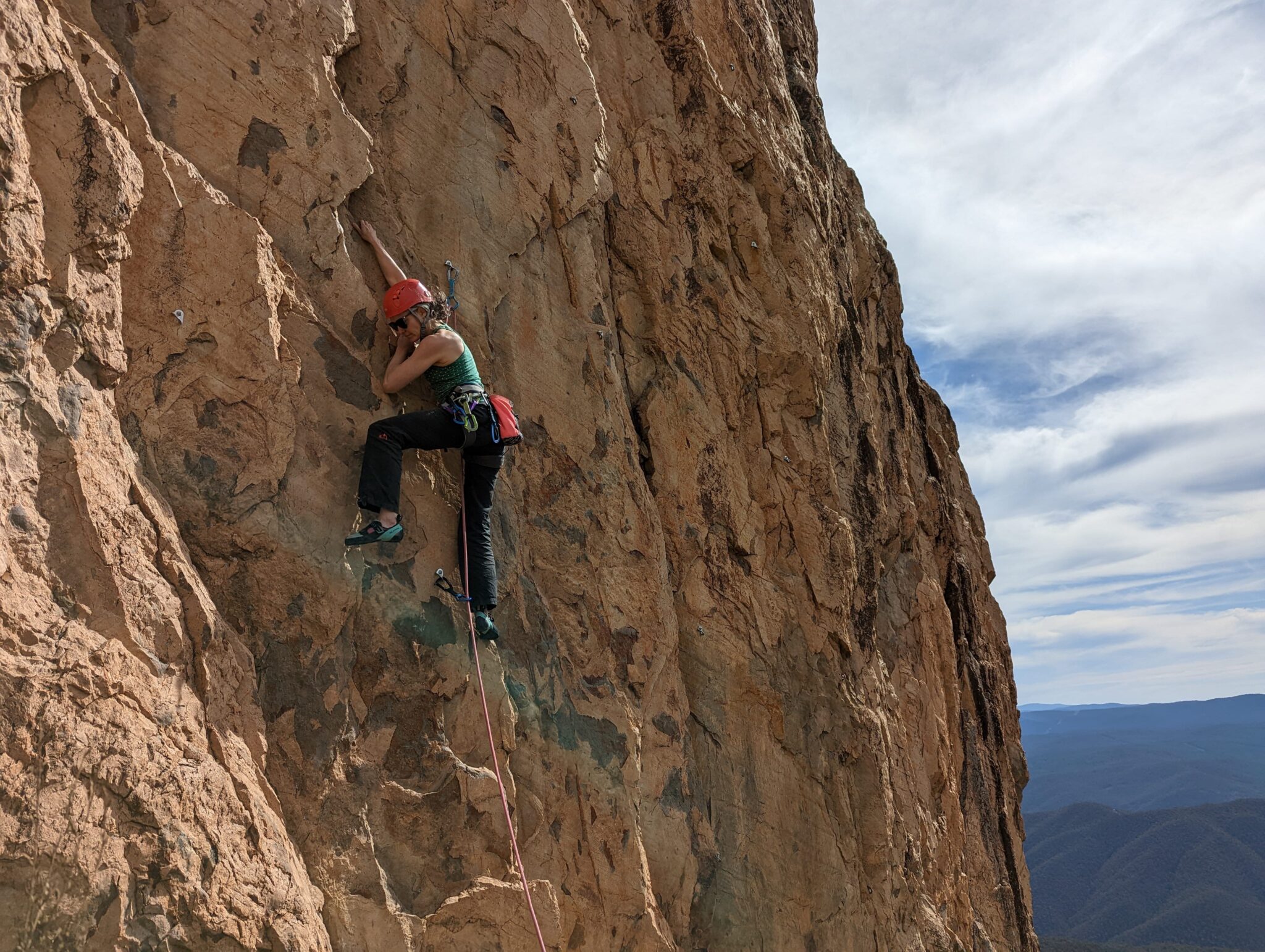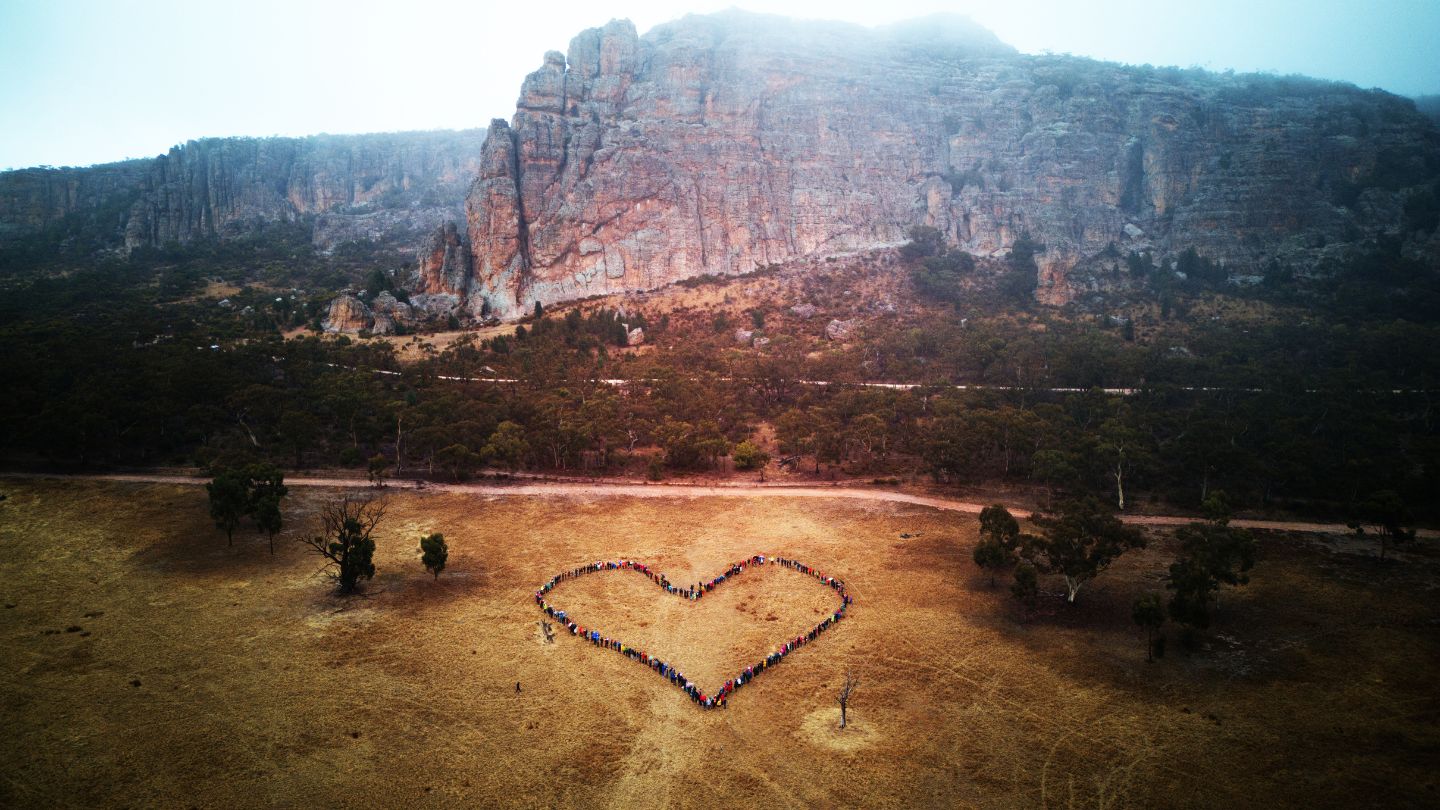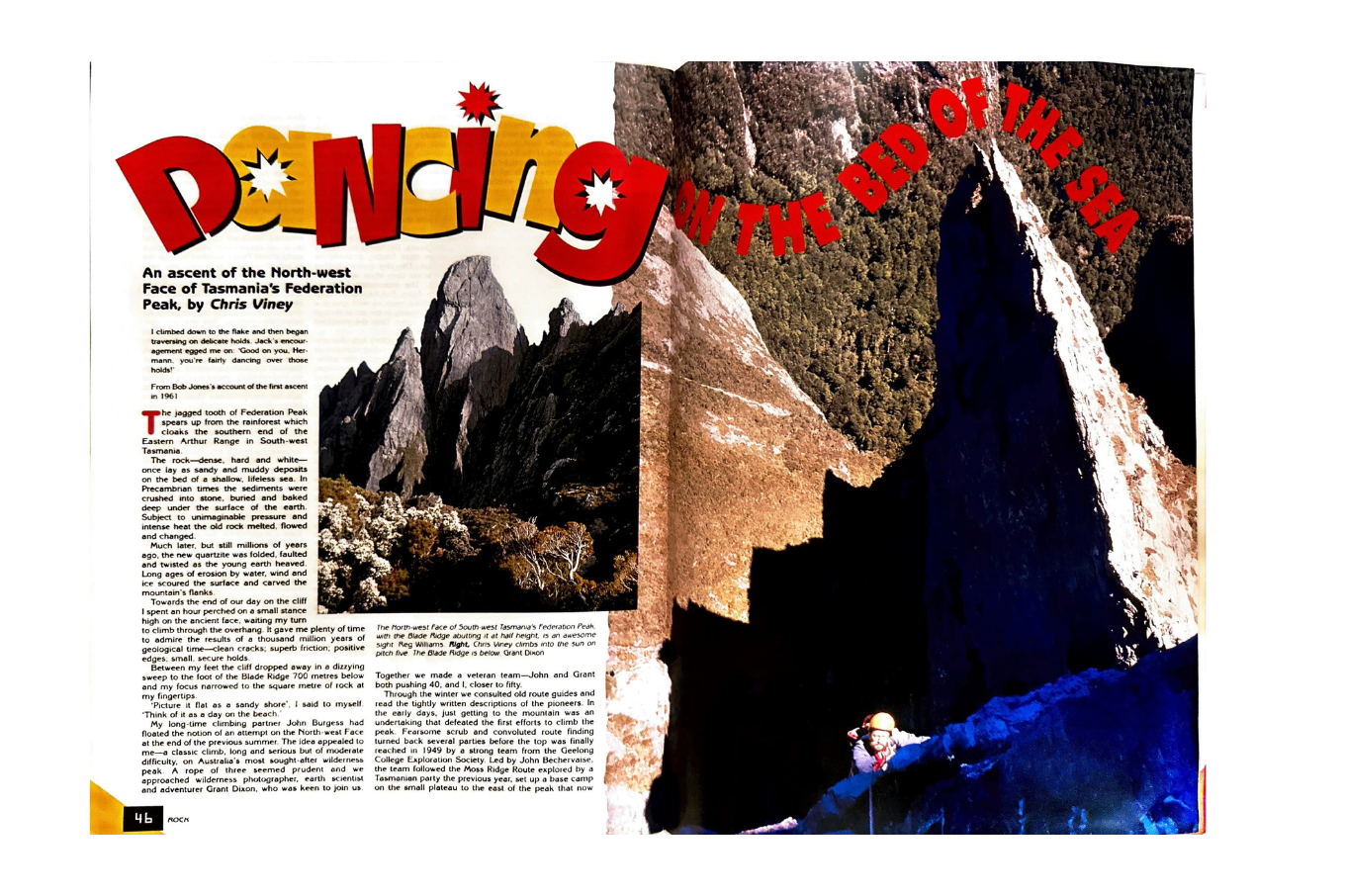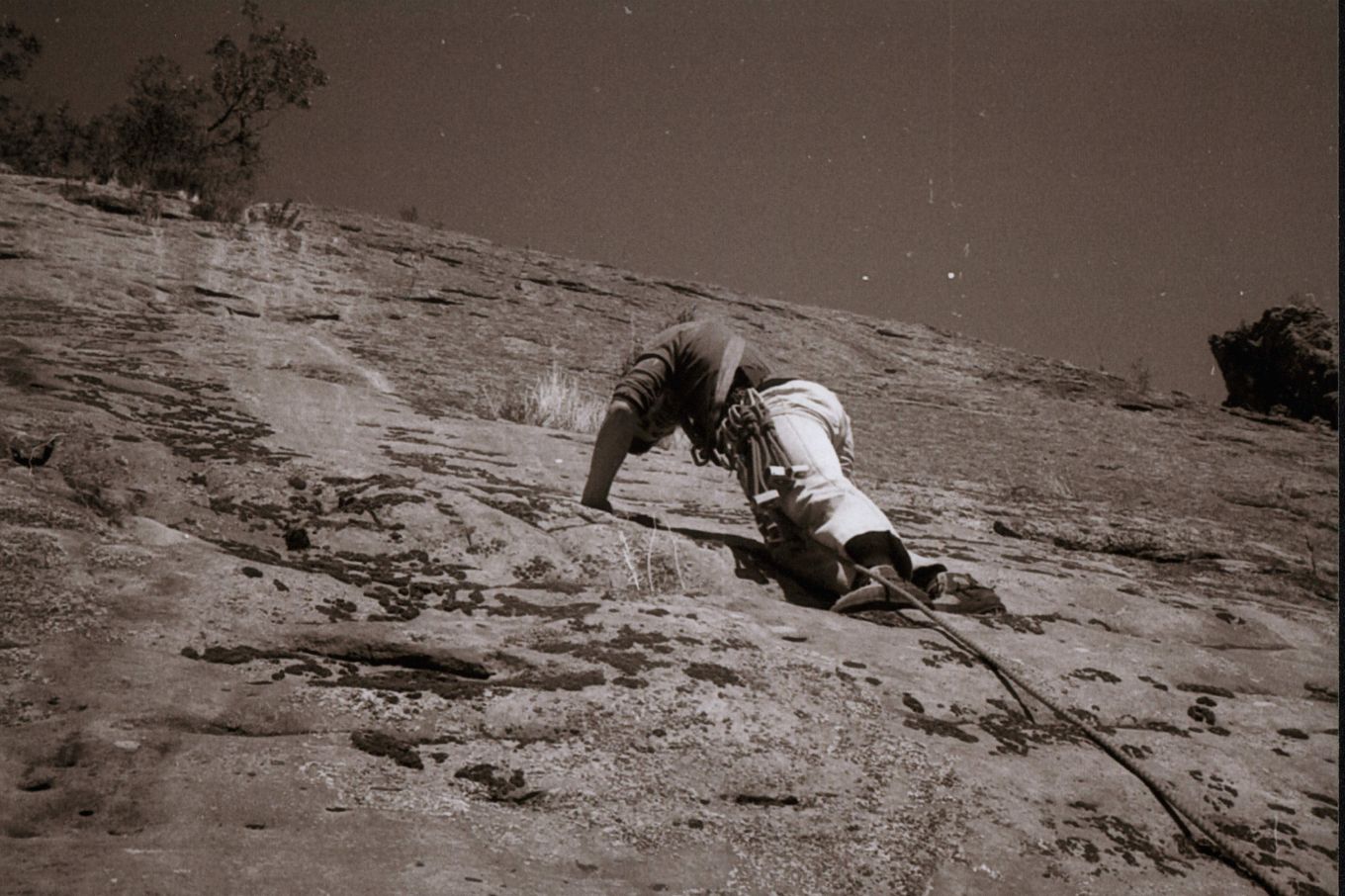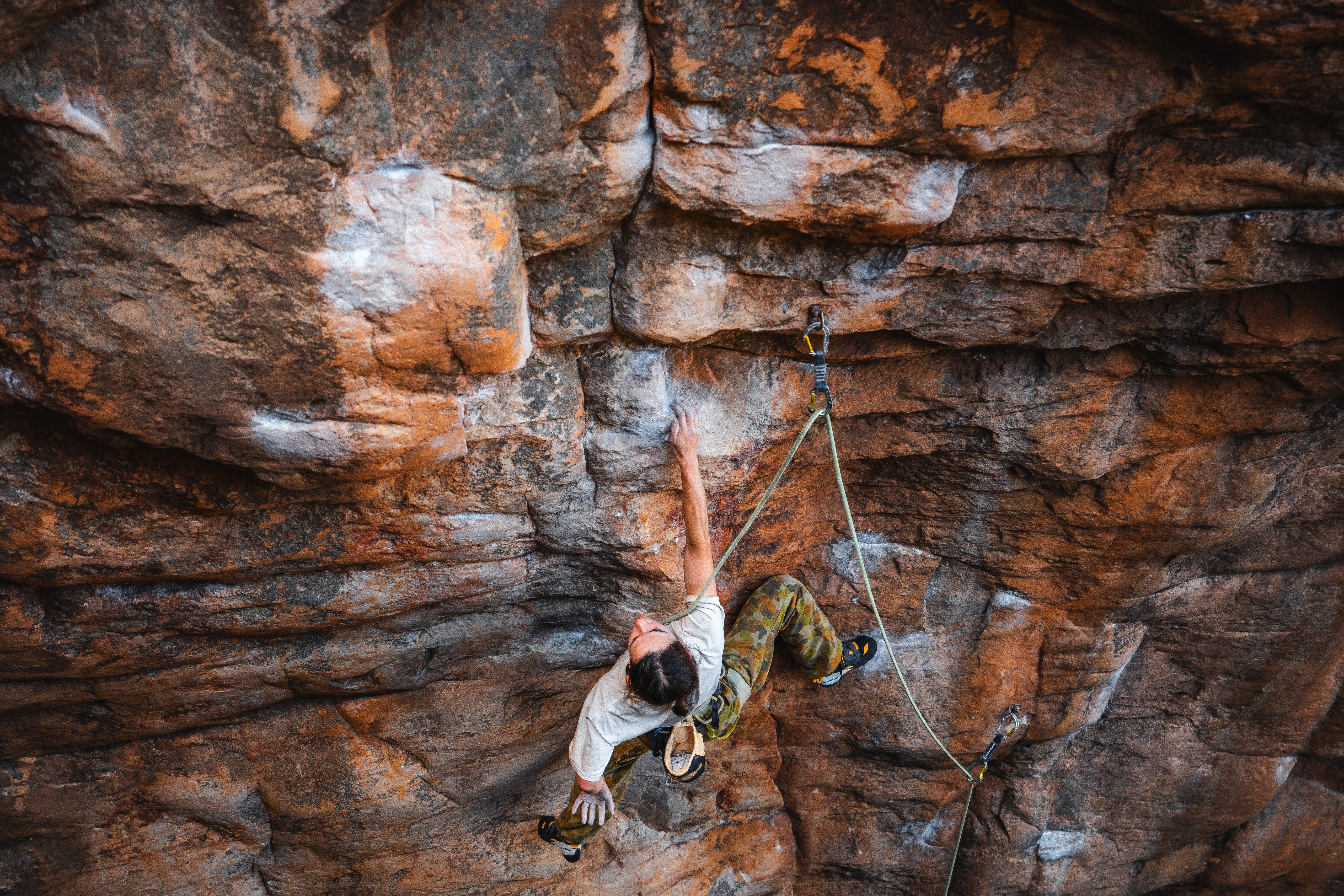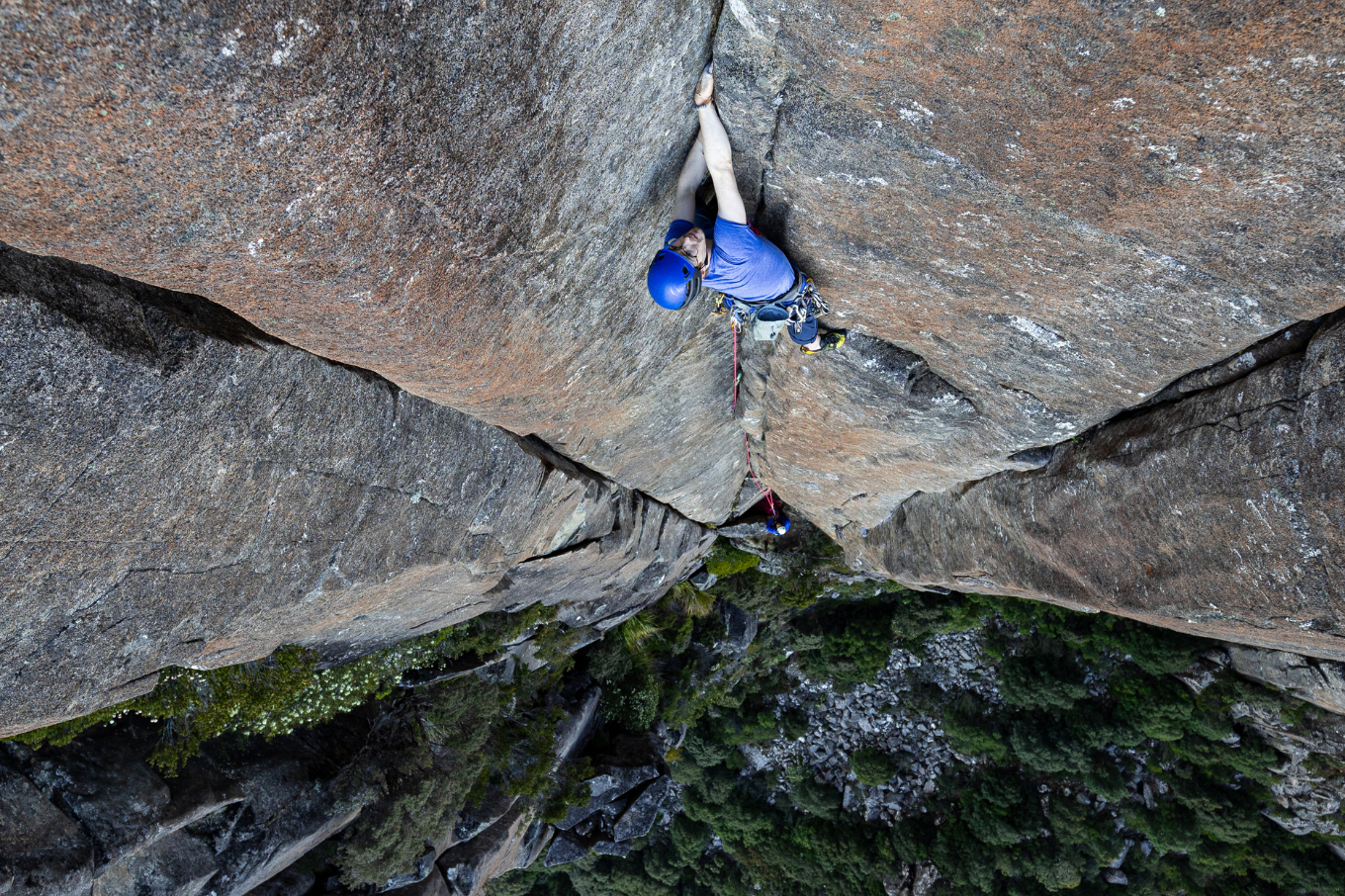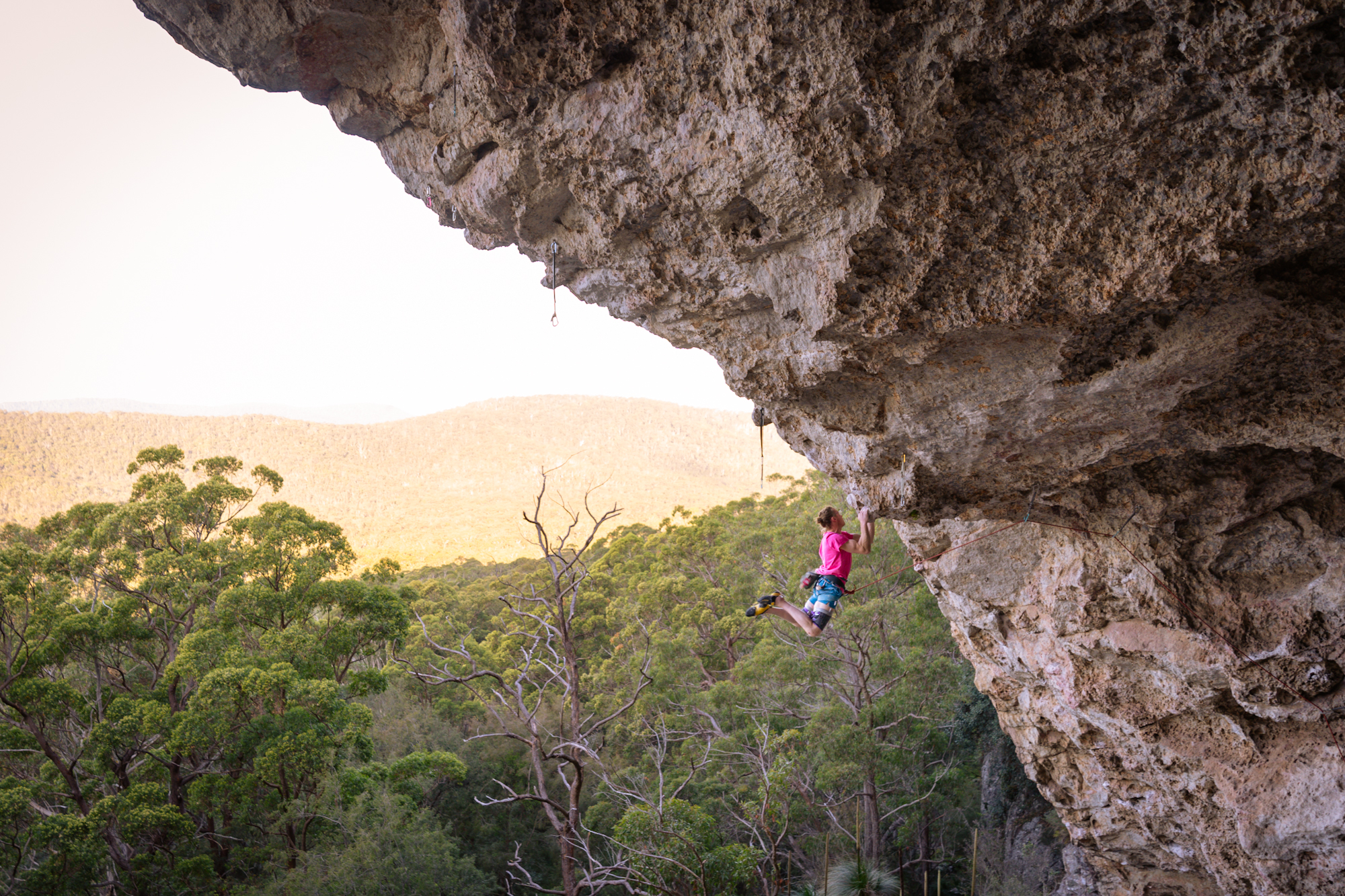Welcome to our Local Lore column, where we drop a pin on the climbing map and ask locals to give us the beta. From local climbing legends and lore to must-do-routes and historical deep dives, we’re letting our favourite locals loose on these pages to tell us how we should be spending our time in their backyards.
Sharona Lin unlocked her love for the outdoors when she moved to Australia’s capital and quickly decided Mount Coree—named after the Aboriginal word for moth—was the crag to climb, especially in spring. Read on to find out why.
Around about every August, I start to wonder what I’m doing with my life. Why don’t I feel fulfilled? And what are we all even doing on this planet we call Earth, anyway?
Then the September sun comes out, and I realise that all that existential dread I’m feeling is probably just because of the Canberra winter.
Canberra winter has downsides other than the casual existential crises—the cold, dry weather makes local climbing pretty hard. Not impossible by any means, of course, but not easy. But as soon as things start warming up in the September sun, everything just seems a little better, a little brighter, a little more fulfilling.
Part of that might be because climbing outdoors becomes much easier, and more fun—especially at Mount Coree, a quintessentially Canberran crag, and one of my favourite places. Mount Coree sits in the Brindabella National Park, within the boundaries of the Ngunnawal, Wolgalu and Wiradjri lands, close to the ACT/NSW border.
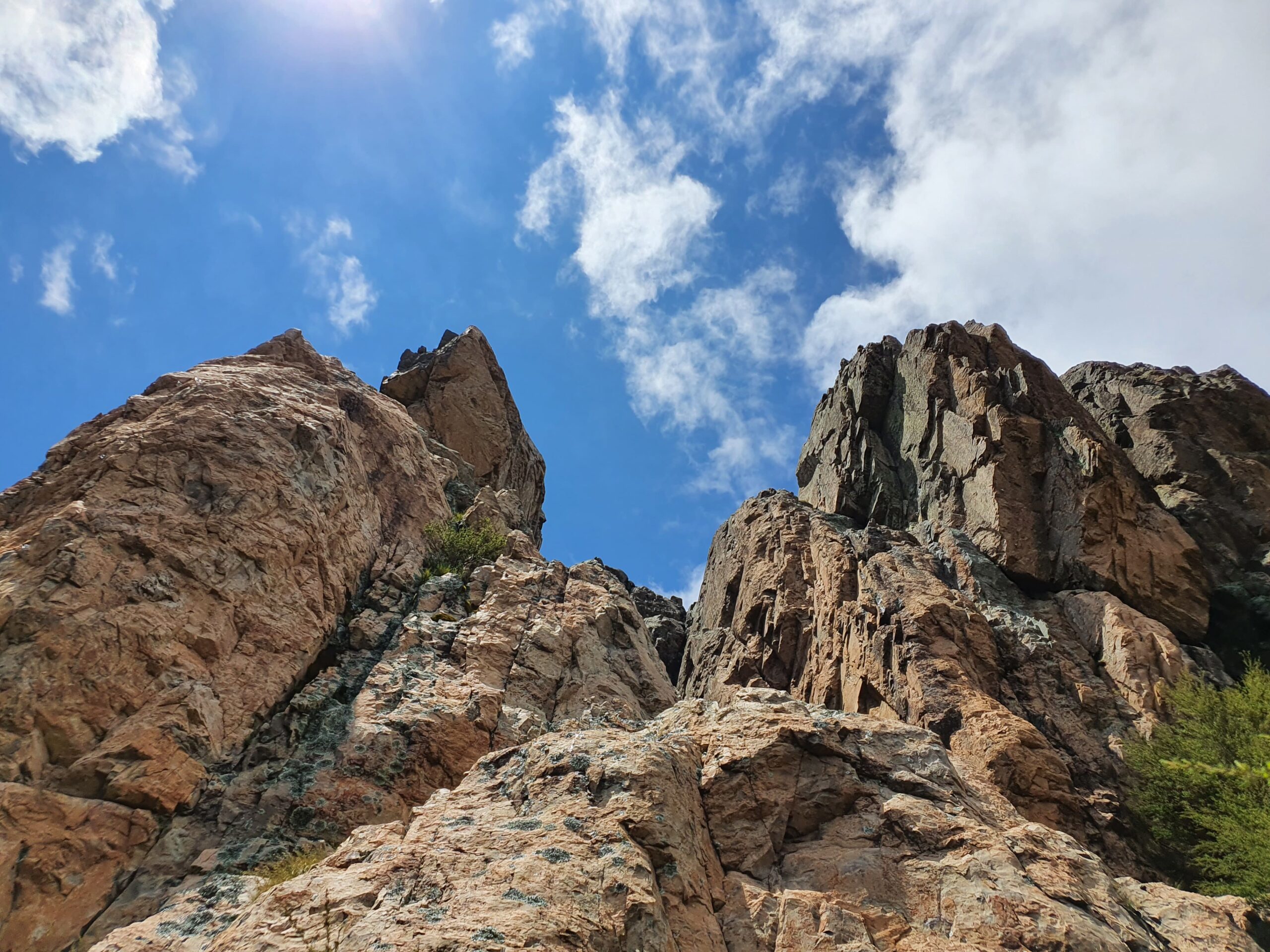
The 90 minute drive there from the nation’s capital feels so Canberra—past mountain biking haven Mount Stromlo, past Uriarra River which is packed with families,students and public servants during the summer, and through Uriarra Forest, bristling with wattles, eucalypts and, in the spring, wildflowers.
Mount Coree was literally the first place people started climbing in the ACT. The Canberra Climbing Association has John Hammond putting up the first route in Coree in 1958, with a good 70 routes added in the next quarter century.
Today, there are about 80 climbs on the ridge of Mount Coree—predominantly sports climbs, with a dash of trad sprinkled in there. But those climbs were mostly put up in the late 90s, and aren’t the same climbs as those set by Hammond. I’m sure an adventurer and history buff will track down John Hammond’s original climbs and climb them at some point—it’s Canberra, after all.
I also love how deeply unpredictable this crag is. Because of Mount Coree’s elevation (it sits at an altitude of 1400m), the mountain is several degrees cooler than Canberra itself. That, in itself, is fine—anyone who’s lived in Canberra through winter has at least one puffer jacket easily accessible from about March to October. But more than once in the winter, we’ve driven up on what appears to be a beautiful clear morning, only to find that it’s inexplicably ice cold and windy on the wall, and after five minutes on the rock, you can’t feel your fingers, or your face.
On those occasions, we’ve wandered up to the peak itself—it’s a pretty short walk to the top, or if you have a four wheel drive, you can crunch over a steep, rocky hill to get there. The 360 degree view is a pretty good consolation prize when climbing conditions aren’t ideal, or even if they are, it’s a nice place to sit and have a snack. Again, all this is contingent on you bringing a good puffer jacket.
I don’t know why I find Mount Coree’s stubborn unpredictability so charming, but I do. Maybe because in day-to-day life, almost everything is controlled. My apartment is always a comfortable temperature and I can watch whatever I want on a multitude of streaming services whenever I want. My office is always the same and so is my gym.
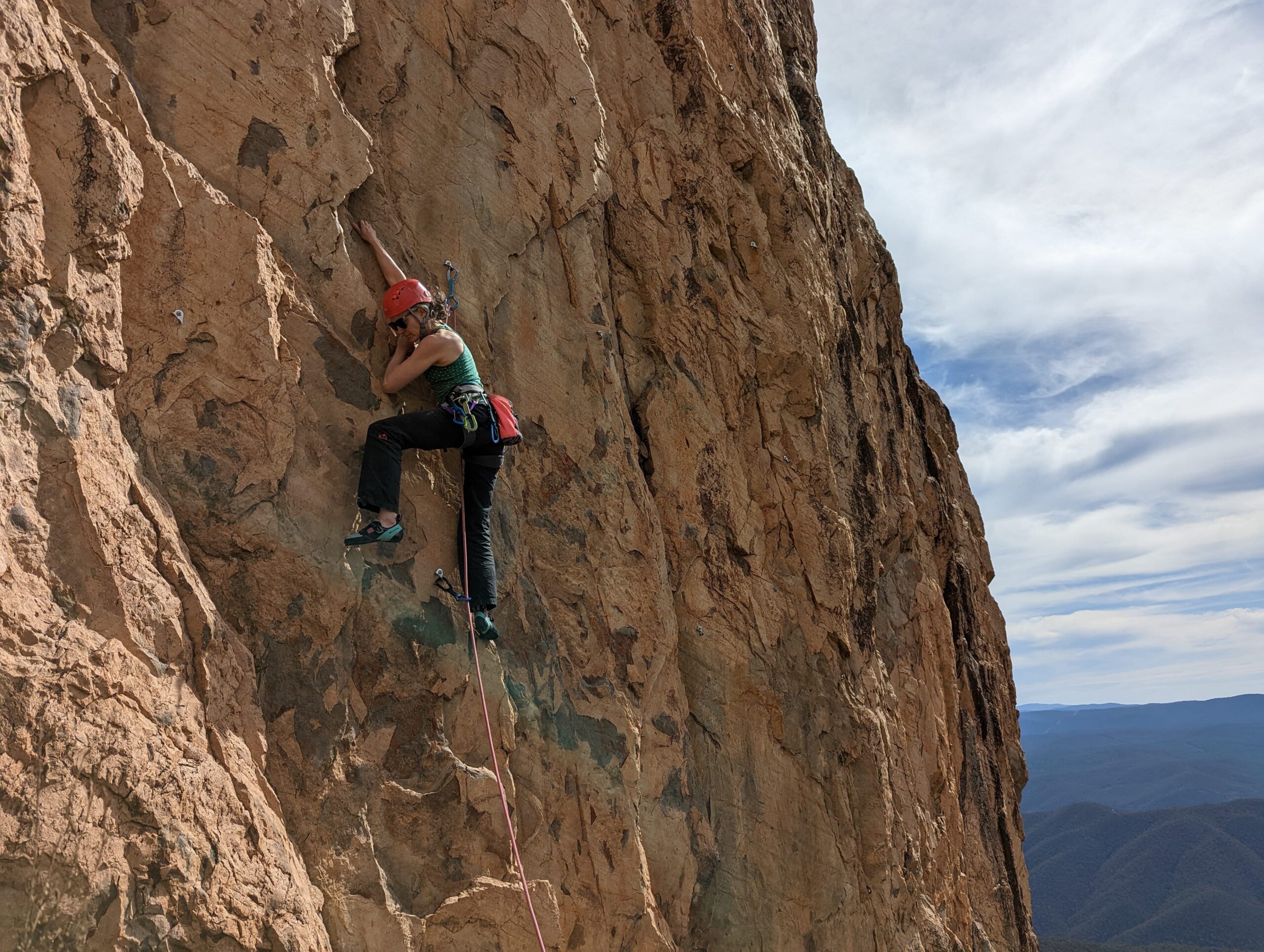
But up on Mount Coree, as with all climbing, you rely on the grace of the elements and the rock. All that said, once the biting cold of winter is through, on a crisp spring day, Mount Coree is perfect.
I need to admit here that I’m not a particularly advanced climber, but having climbed with people who are both more advanced and less advanced than me, I’m confident in saying that Mount Coree has something for everyone.
The approach (if you have a four wheel drive, which I do) is a breeze. That is a good thing, because I am on the record as someone who hates hiking. (Okay, I don’t actually hate hiking—but I am a very slow hiker, and so hiking with other people stresses me out.) If you don’t have a four wheel drive, it’s still only a roughly 40 minute walk from the Mount Coree Campground.
The Wind Wall is the most easily accessible wall—only a few minutes wander from the bend in the road most people with four wheel drives park at. It’s also the wall with the greatest density of routes, including certified classic Jerusalem. It’s a safe climb, graded accurately (19), and just flows. It’s a very cool climb.
There’s not any big wall climbing in Canberra—we’re not exactly Yosemite out here—but Jerusalem feels like a big wall climb. The ground slopes to the right and falls down and away pretty rapidly. So from about halfway up the route, you get the illusion of scaling an epic wall 100 metres above the ground. And once you’ve reached the top, you look out over the vast landscape of the leafy eucalypts of the Brindabellas, and you think, Yeah. That’s what this is all about.
Nearby, there’s a three star 21, Super Jesus, which is well regarded, and imparts the same oh damn feeling I get from Jerusalem, and then a whole mess of very respectable 20-something graded climbs to the right. To the left, there are a couple of lower graded climbs if you don’t want to jump straight onto Jerusalem—but to warm up, heading to a wall like Eco-Terrorism is probably your best bet.

Eco-Terrorism has Sunday and Blue Jay Way, two 15s that are perfect for beginners to find their feet on, or for seasoned climbers to warm up on. It’s also got a three-star 25 called Fly Boy Baby, which I can only aspire to.
The Wind Wall has the most, and the most classic, climbs. But because it’s so steep and rocky, it’s unfortunately a terrible place to eat lunch. Luckily, there are plenty of good spots to sit and eat lunch along the ridge.
Pretty Gully and Pretty Backside are two of the prime suspects for a spot to sit and refuel. They get a good amount of sun, and they face out, again, over the Brindabellas. Then, once lunch is over, the area also has a really nice diversity of climbs for climbers of all calibres. Again, as with so many of the climbs around Mount Coree, they’re clean climbs, on good rock, and importantly, they’re fun.
I’ve been to Mount Coree and climbed. I’ve been to Mount Coree and I haven’t climbed. I’ve climbed there really aggressively and burned myself out on a couple of routes before lunch, and I’ve climbed there all day, only stopping because the sun started setting. But every time, I come away feeling pretty damn good about life, and glad that I’m on this planet we call Earth.

